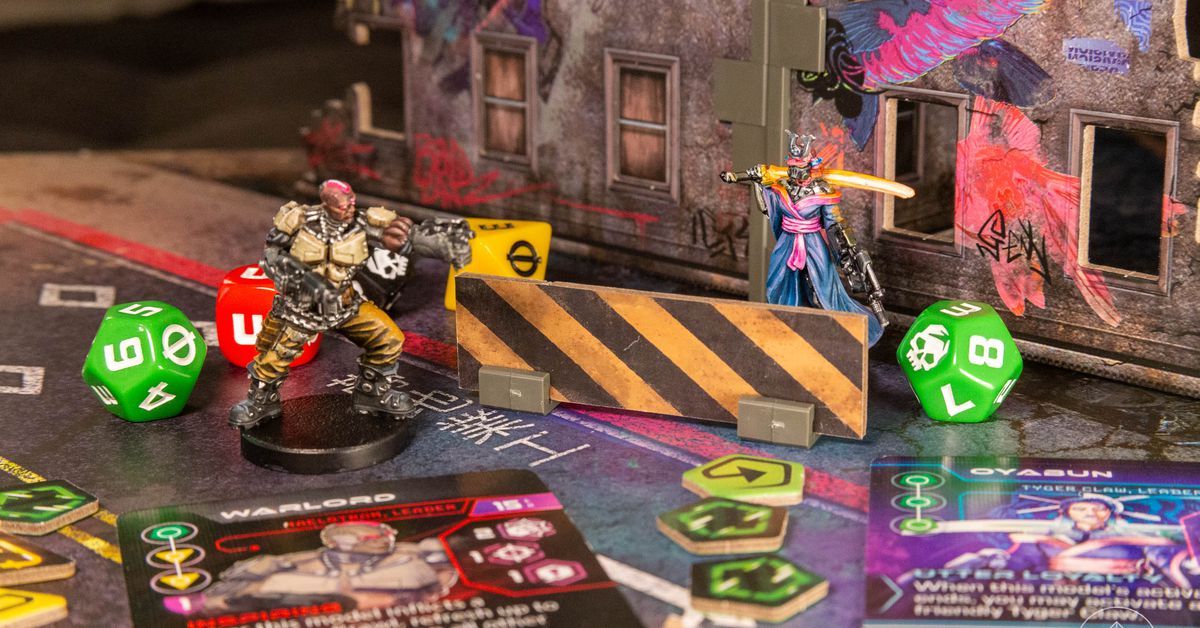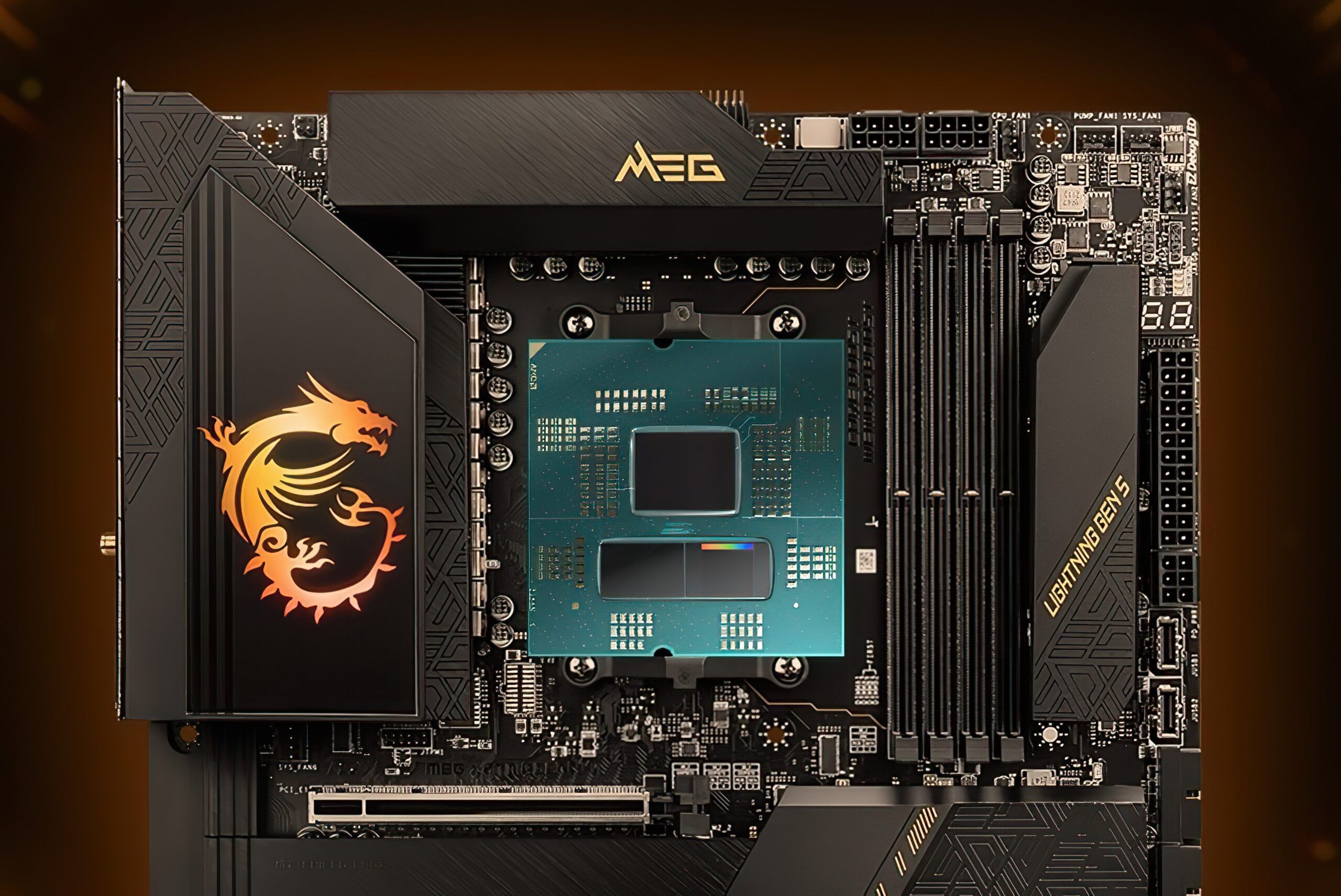Review: Cyberpunk Red: Combat Zone’s badass, affordable starter set
Cyberpunk Red: Combat Zone is the real deal, a miniatures skirmish game with a modest price tag that delivers a meaty experience right out of the box. Developer and publisher Monster Fight Club has a potential hit on its hands, especially if it catches on with fans of Cyberpunk 2077. The game is shipping to its crowdfunding backers right now, and pre-orders are currently open for the retail release later this year. Here’s what we found inside an early preview copy.
Polygon Recommends is our way of endorsing our favorite games, movies, TV shows, comics, tabletop books, and entertainment experiences. When we award the Polygon Recommends badge, it’s because we believe the recipient is uniquely thought-provoking, entertaining, inventive, or fun — and worth fitting into your schedule. If you want curated lists of our favorite media, check out What to Play and What to Watch .
Combat Zone is based on the same source material as CD Projekt Red’s own blockbuster multiplatform hit, R. Talsorian Games’ Cyberpunk tabletop role-playing universe. First published in the 1980s, Cyberpunk 2020 was later rebooted with Cyberpunk Red, the analog prequel to Cyberpunk 2077. So while the action technically takes place about 30 years before the events of the video game, many of the factions, weapons, and tropes will immediately be familiar to fans of V and Johnny Silverhand.
In addition to having strong brand-name recognition, Combat Zone is also a lot less expensive than large-format wargames like Warhammer 40,000. That’s because you only need about three to six miniatures to do battle in a relatively small area — here, a space that’s 22 inches wide and 30 inches long. That means your investment in terms of both time and money will be much lower than with a traditional miniatures wargame.
On the table, the action plays out a lot like turn-based tactical games such as XCOM or Fire Emblem. Players activate multiple figures on their turn, keeping their troops behind cover only to leap out into the open to do some damage when the time is right. But unlike more complex rule sets, such as those for Necromunda or Infinity, Combat Zone relies on easy-to-read cards and cardboard tokens. It’s the kind of system that truly only takes a few minutes to teach, but one that easily expands and adapts to cover all manner of situations. That includes netrunning, a kind of hacking that feels a bit like casting magical spells on your opponents. Also, like Infinity, Combat Zone allows you to interrupt your opponent’s turn, which tends to keep both players engaged during what can be a fairly long game turn. This way, you won’t just sit back and wait 20 minutes for your time to come. Instead, you’ll need to be looking carefully at how and where your opponent is moving across the table for a chance to spoil their plans.
The included 54-page rulebook is a workmanlike product — a bit fluffy around the middle, perhaps, but with its heart in the right place. The massive examples of play are a highlight, and they clearly show the game’s systems in motion. The book is also extremely comprehensive in delivering the rules of the road, including guidance for one-off, campaign, and multiplayer modes of play. I especially liked the campaign rules, which allow for an asynchronous experience. Basically, so long as you and the other players involved in your campaign keep pace with each other game-for-game, you can play with whomever you want — even with someone playing in a different campaign or a rando that you met at your friendly local game store. Campaigns are even topped off with climactic missions that can bring a given faction’s storyline to a satisfying conclusion.
Overall, Combat Zone is an incredible value. For just $120, you get 12 miniatures, including six for each of two factions with a smattering of extra heads and weapon options; over 250 cards featuring campaign scenarios, characters, loot, and spells; all the cardboard tokens you need; several three-dimensional buildings with non-destructive, push-fit connectors; and a plastic shipping container with doors that open and close. Other than assembling and painting the miniatures themselves, just about everything else inside the box is ready to go.
There’s just one problem, however: Monster Fight Club neglected to include proper assembly instructions for either the miniatures or the terrain. That’s likely to be a deal breaker for folks new to the hobby of miniatures gaming, especially since Monster Fight Club’s methods and materials depart from industry giants like Games Workshop.
While Combat Zone miniatures are fairly easy to put together, with only two or three pieces each, they require cyanoacrylate (also known as CA glue or “super glue”) or another, similar type of adhesive to assemble. That fact isn’t mentioned anywhere in the boxed set, and considering there’s a chance you could ruin your miniatures by using the wrong stuff, it absolutely should have been. Additionally, the flashing on these miniatures — leftover imperfections common to figures of this size — can be a challenge to remove. Whatever material they’re using (I’m all but certain it’s a new formulation known by the brand name Siocast), the flashing can’t be easily scraped away and must be cut away instead with a very sharp knife. For me, that led to putting a few gouges in Polygon’s models.
Similarly, the boxed set offers very little guidance on how to assemble the included miniature buildings or other barricades that come inside. In fact, the plastic connector pieces themselves are hidden underneath the plastic pack-in — I didn’t even know they were there until I emailed the manufacturer. Monster Fight Club tells Polygon it’s creating a series of videos to deal with these oversights, but it’s a shortcoming that I hope will be corrected with the game’s second printing.
Even with those imperfections, though, I’m still extremely enthusiastic about Cyberpunk Red: Combat Zone. It’s a game that you can get started with for as little as $50 — the price of a six-figure Combat Zone starter gang and the cards you need to play them. The game launches alongside two starter gangs, the Zoners and the Lawmen, with another six on the way. That’s a total of 10 factions in all, each with its own unique abilities, gear, spells, and thematic scenarios to explore. It all adds up to a quality launch with very few bugs to speak of.
Source: Polygon


